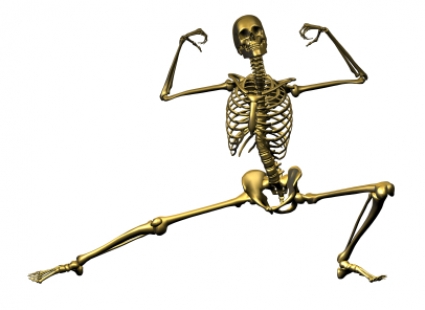By Dr. Charles T. Price
Institute for Better Bone Health
Exercise is beneficial to nearly every part of the body, but it has a particularly interesting effect on bones. Certain kinds of exercise actually stimulate electricity in bones that can spark bone growth. When you apply pressure to bones during exercise, the bones react by emitting an electrical charge.
Bones have a framework of fibers called collagen that helps keep bones’ support structure strong. This framework requires special proteins to attract and ‘glue’ calcium crystals. Bones need to be resilient and flexible because exercise puts great pressure and impact on bones and joints, that can cause stress fractures.
The best exercises for bone growth are strength-training exercises. These can be low or high impact, and target a specific group of muscles, in static or repetitive movements.
Isometrics, a specialized form of strength training, also benefits bones. Isometrics involve standing (or sitting) in one spot, and again, concentrating on specific muscles. One of the major perks of isometrics is that you can perform them almost anywhere and they require no equipment or gym membership. You can even perform minimal isometrics at work or in your car. Wendie Pett Visibly Fit™ Babyboomer features a range of strength training exercises that promote bone health.
The spine is obviously a key area to focus on for better bone health. Here are a few exercises to try to strengthen the spine:
The Superman Position – on stomach with arms and legs outstretched
Heel Drop – raise heel off ground, hold, drop, and repeat
Push-Up – hold yourself in a push-up position (beginners may choose to keep their knees on the ground)
While any exercise is better than none, several have little effect on bone growth. Walking is one example, because the legs absorb most of the impact – but walking is helpful for your hips. And swimming has even less impact on bones than walking.
Certain nutrients like silicon also stimulate bone electricity. The same protein framework that is in hair and nails is also found in bone – and a common ingredient is silicon. Bone won’t form without adequate amounts of dietary silicon. It’s thought that silicon helps attract calcium to immature bone and then leaves after the calcium is attached. The formation of these calcium crystals does not require excess calcium. In fact, too much calcium actually makes bones brittle and more than 2,000 mg a day increases the risk of fracture.
Silical® System is the original bone health supplement formulated to improve the effects of calcium and vitamin D.
So, strength-training exercises, combined with proper nutrition and supplementation with essential bone-building nutrients, play a role in stimulating bone electricity that may help bone grow. Although there is still much to discover, what we do know can influence how young people maintain strong, healthy bones and how those with bone problems can harness bone growth.



